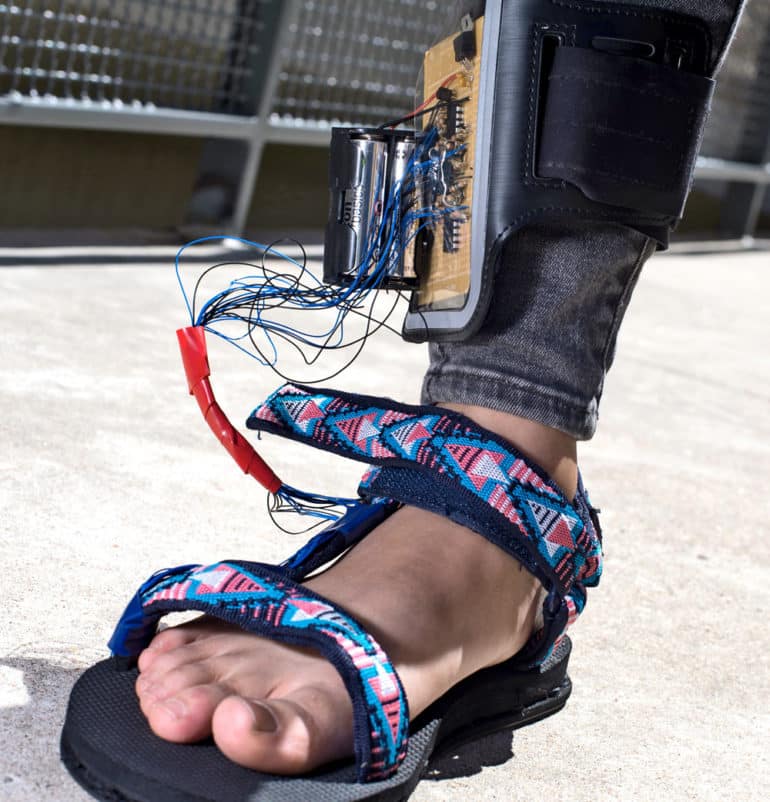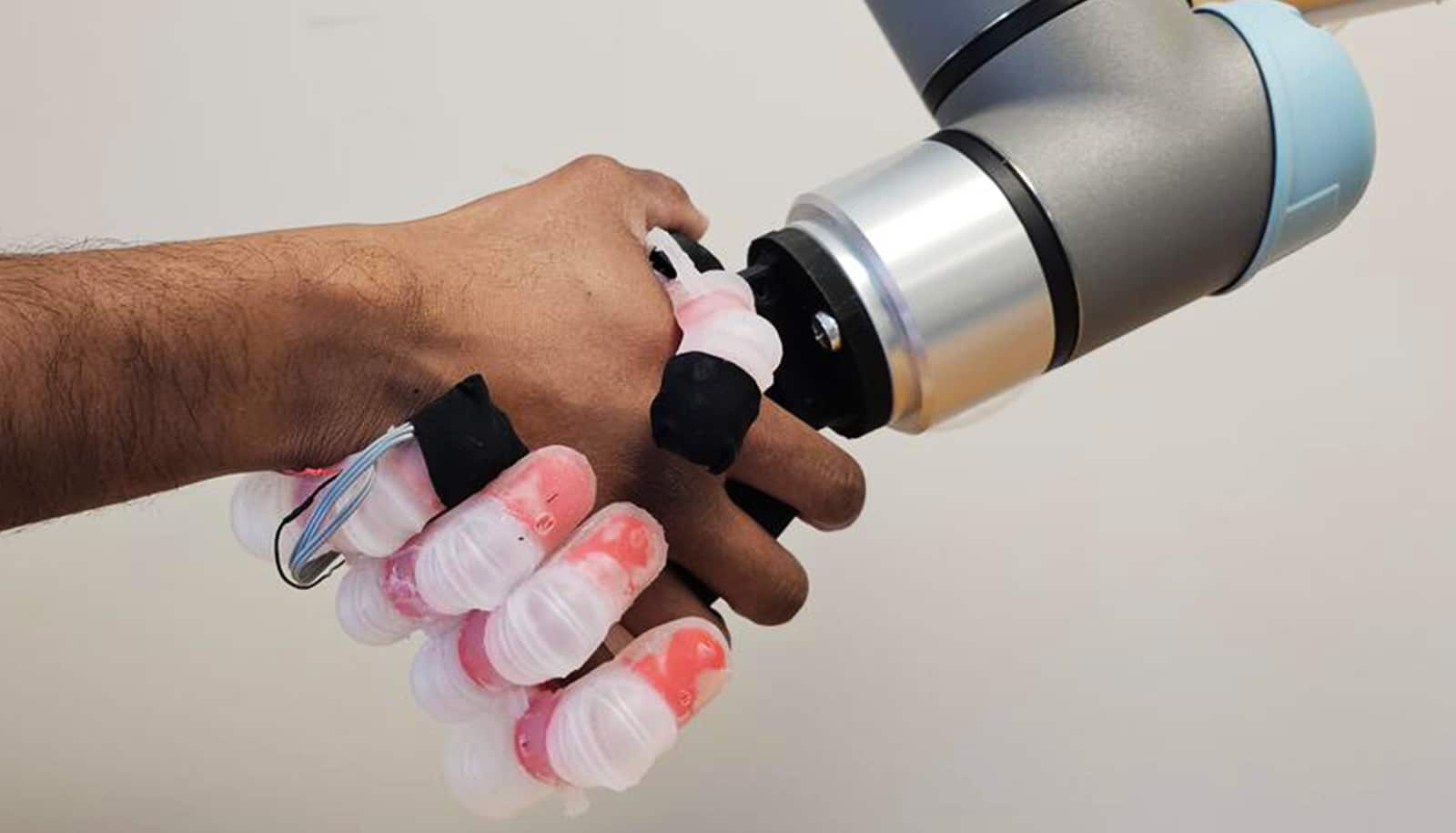A prototype device could help people with impaired sensation in their feet stay upright and avoid falls.
Created by a team of bioengineering students at Rice University, the tangle of wires, sensors, circuits, and motors could someday be a simple powered insole that can go into any shoe to provide additional tactile sensation to improve the wearer’s motor skills.
That sensory feedback could prevent a tumble. For many elderly and patients with diabetes who might have lost some ability to feel their extremities, that can be a lifesaver.

Mehdi Razavi, director of electrophysiology clinical research at the Texas Heart Institute, challenged students working on their required capstone projects at Rice’s Oshman Engineering Design Kitchen to find a way to help his patients maintain their balance.
The students, who call their team “All the Feels,” solved the problem by dividing the foot into four zones. Under each they placed a sensor that measures the pressure on the foot, which helps determine how much tactile sensation the user should feel. Above each sensor they placed a vibrating motor, not unlike that found inside a cellphone, to provide additional sensation to the wearer.
Gamer without hands built this controller for his feet
They hope wearers will eventually learn to process the feedback unconsciously and adjust their strides automatically to navigate stairs or uneven terrain.
“We’ve designed the system so it can be adjusted to the patient’s needs and degree of peripheral neuropathy,” says team member Megan Kehoe.
“You’ll feel exactly where you’re applying pressure,” adds Suzanne Wen. “The amount of vibration is proportional to the amount of pressure: If you apply a lot, you’ll feel a lot; if you apply just a little pressure, you get just a little vibration.”
The four motor-sensor combinations under each foot operate with complete independence and were placed based on the areas of the foot that are most important for balance control. “How you respond to the vibrations shouldn’t be a conscious decision,” Kehoe adds. “Your nervous system should react instantaneously.”
The sensors and motors live for the moment in the middle of a one-size-fits-all sandal for testing, but the students expect that all the elements, including a custom circuit board and the power supply, can be miniaturized. That way, a user could move them between pairs of shoes.
The team will demonstrate its invention at the George R. Brown School of Engineering Design Showcase on April 13.
Source: Rice University



